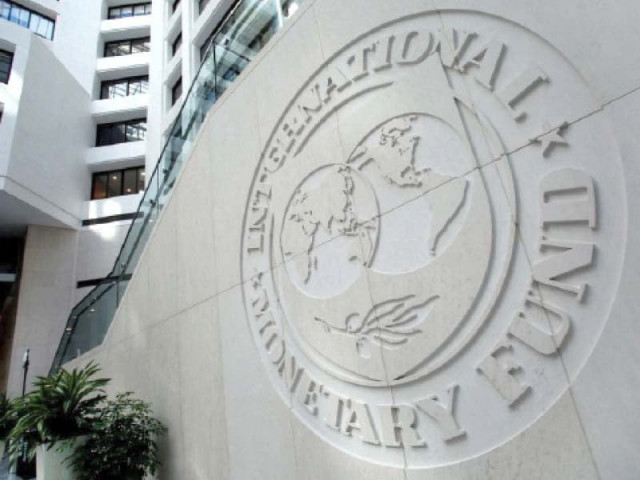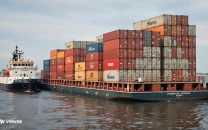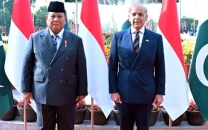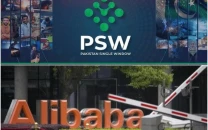IMF and Pakistan’s trade dilemma
Efforts must be made to ensure country is able to escape from vicious cycle

The International Monetary Fund (IMF) has reached a staff-level agreement to complete the seventh and eight reviews of Pakistan’s Extended Fund Facility (EFF).
With the approval of IMF’s Executive Board, $1,177 million will become available to Pakistan with a total disbursement of $4.2 billion. This will bring much-needed economic certainty and consequently reduce volatility in the exchange rate of Pakistani rupee to the US dollar.
The policy priorities include stringent measures to reduce the borrowing needs of the government, introduce power sector reforms that reduce the circular debt, a proactive monetary policy to bring inflation rates down to more sustainable levels, and strengthen and improve the quality
of governance.
These measures will require significant effort from the government to honour the commitments and keep the
programme on track.
Even though the IMF programme is likely to provide much-needed relief in the exchange rate volatility and uncertainty observed in the recent months, efforts must be made to ensure that Pakistan is able to escape from the vicious cycle that involves approaching the IMF every
few years.
One of the major factors that result in this vicious cycle is the lack of productivity. While countries like Vietnam and Bangladesh have made significant strides in their productivity levels in the last couple of decades, Pakistan has
lagged behind.
Subsequently, the lack of exports, low levels of trade openness and the inability of local producers to compete in regional and global markets have reduced the ability to generate much-needed dollars, forcing the government to rely on the loans extended by multilateral lenders and friendly governments.
According to statistics provided by the International Trade Centre’s Trademap.org, global exports increased more than 20% in 2021. Exports from Pakistan were reported at $31.8 billion in FY22, the highest-ever reported. It increased 25.5% over the value in the last fiscal year, as reported by the Pakistan Bureau of Statistics (PBS).
Exports in June 2022 were about $2.9 billion, approximately 5.8% higher than exports in June 2021 and 9.9% higher than exports in May 2022.
There was also an upsurge in imports as they were reported at $80 billion in FY22, 41.9% higher than the value reported in FY21. Imports in June 2022 were at $7.7 billion, 21.6% higher than the value in June 2021 and 13.9% higher than the value in May 2022.
The import ban that took effect at the start of FY23 may explain the sudden surge at the end of FY22. However, this negates the very purpose of the import ban as it was a measure introduced to curtail the outflow of dollars at the peak of the economic crisis.
The disruptions as a result of the import ban have created high economic costs. The trade deficit was reported at $48.3 billion in FY22, 55.3% higher than the value reported in FY21.
One of the major factors for the rise in the trade deficit was the high growth in imports of the products belonging to the petroleum group. According to the latest data available from PBS at the time of writing, the imports in petroleum group doubled year-on-year in dollar terms in the first 11 months of FY22.
None of the other groups observed such a high increase. The imports of petroleum products increased by 126.2% year-on-year, while the quantity increased by 26%.
The fact that the increase in international commodity prices was not met with increases in fuel prices at the petrol pump exacerbated the trade deficit. Pakistan needs a better strategy, which involves trade reforms that can bolster the linkages between exports and imports.
The Economic Advisory Group (EAG) recently launched its book titled “Trade Connectivity”. The book highlights the benefits of more trade openness for Pakistan as it will help increase economic growth, improve national welfare and enhance consumer welfare through lower prices and availability of greater varieties of goods in the domestic market.
One of the major challenges as noted in the book is the lack of participation in global value chains (GVCs).
The total participation in GVCs for Pakistan is approximately $6 billion, which is significantly less than that for Thailand, Vietnam and India. The latter countries reported at least $90 billion participation in GVCs in 2017.
GVC participation, which involves goods crossing borders multiple times, takes place through either backward linkages or forward linkages. The former involves converting imported inputs into exports locally, while the latter involves converting domestically produced goods into exports in the importing country.
While the Southeast Asian countries have developed backward linkages, Pakistan and India have focused on developing forward linkages by exporting intermediate goods.
The decline in import tariffs in Asean countries has played an important role in promoting participation in GVCs. Several countries are signing free trade agreements (FTAs) with their major
trading partners.
Although FTAs can benefit exports, they can be important in sourcing inputs from major suppliers. For instance, the book highlights how Vietnam is dependent on imports from countries with which it has negotiated an FTA.
Furthermore, Vietnam has also adopted several non-tariff measures (NTMs) to improve the linkages for its producers in major markets.
NTMs involve predetermined specifications in the production of goods and can help improve quality of goods produced as well as ensure that imports of either poor quality or dangerous goods are prohibited. Hence, Vietnamese products are likely to comply with certain standards and specifications. Unfortunately, the Pakistani government has failed to adopt NTMs and the delay is likely locking its producers out from the more advanced and
developed markets.
The writer is the Assistant Professor of Economics and Research Fellow at CBER, Institute of Business Administration, Karachi
Published in The Express Tribune, July 18th, 2022.
Like Business on Facebook, follow @TribuneBiz on Twitter to stay informed and join in the conversation.



















COMMENTS
Comments are moderated and generally will be posted if they are on-topic and not abusive.
For more information, please see our Comments FAQ